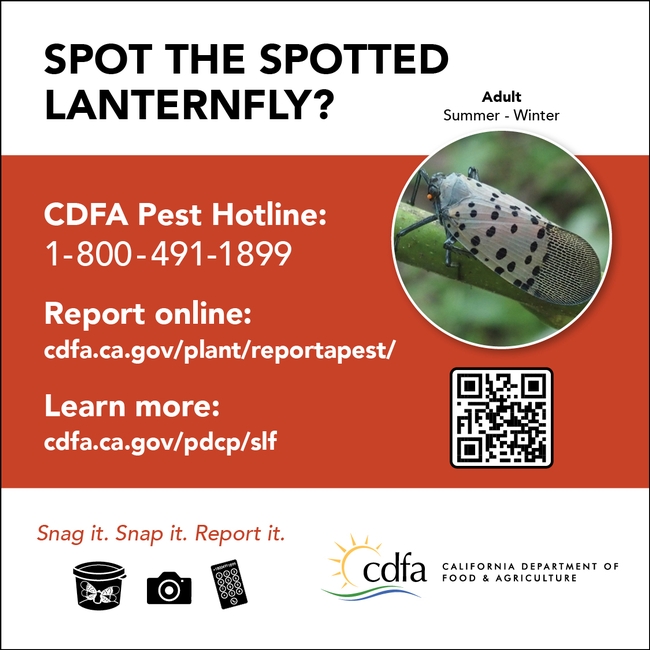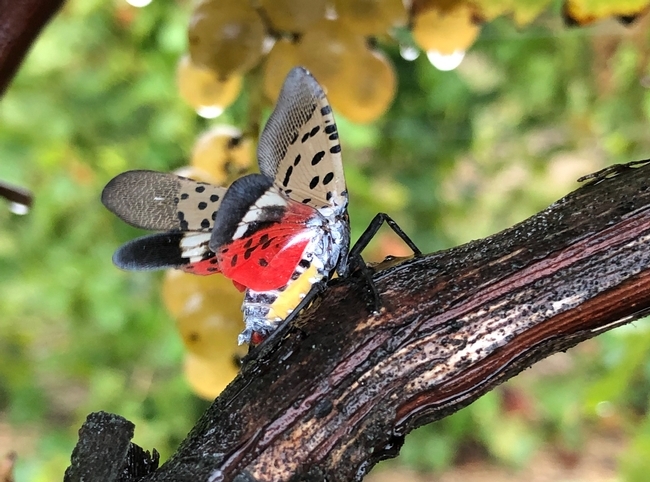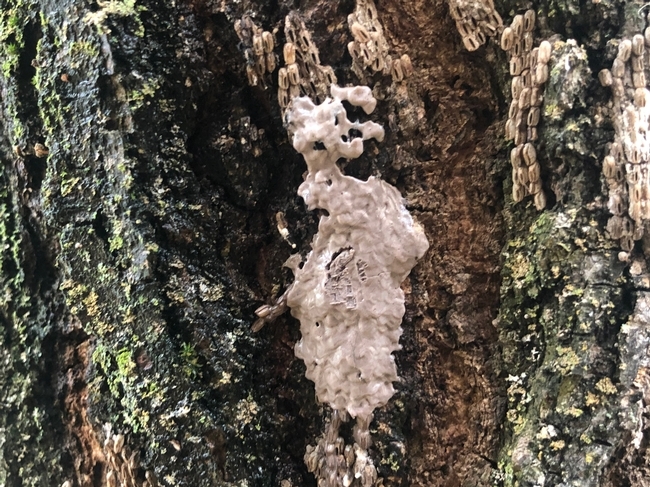The spotted lanternfly is beautiful when its wings are open, showing off a striped yellow abdomen and ruby red and black polka dot wings. But the pest could become a menace in California.
Native to China, spotted lanternflies were first introduced into the United States in 2014 when their presence was confirmed in Berks County, Penn. They have since established populations in 17 states, as far west as Illinois. Spotted lanternflies are little more than a nuisance in their native range because they evolved along with controlling factors – such as predators and microbes – that achieved a natural balance. But when they arrive in new territory, the pest multiplies quickly and becomes a threat to the production of apples, grapes, stone fruits, roses, landscape trees and timber.
The inch-long adults are like giant aphids. The pest sucks sap out of plants and trees, depleting nutrients and reducing plant vigor. While feeding, they emit waste sugars that cover plant leaves and invite fungi to grow black sooty mold, a coating that inhibits the plants' photosynthesis.
In the eastern U.S., residents say spotted lanternflies affect their quality of life and ability to enjoy the outdoors. The pest covers trees, swarms in the air and their honeydew can coat decks and playground equipment.
Potential for cross-country spread
Spotted lanternfly movement is aided by females' ability to lay their nondescript egg masses on surfaces of natural and human-made objects, such as packages sent from distribution centers, long-haul trucks, railroad containers, recreational vehicles and ordinary cars. The egg masses are covered with a waxy gray-brown coating that looks like a splash of mud.
In fact, egg masses have already entered California. UC Integrated Pest Management advisor Cindy Kron detailed the incident at a recent webinar. A large art structure on a flatbed truck was stopped at the Truckee CDFA inspection station on March 17, 2024. Because of what appeared to be SLF egg masses on the structure, it was denied entry and ultimately more than 30 viable egg masses were found. After being power washed with soap and water in Nevada, it was cleared by inspectors with the Nevada Department Agriculture.
The structure was offloaded in Sonoma County and inspected by the local ag commissioner, who found three more egg masses.
“Each of the egg masses contain from 30 to 50 eggs,” Kron said. “This structure was carrying between 990 and 1,650 SLF eggs. That is enough to start a population.”
If the SLF egg masses had not been found, the pest could have been established in agriculture-rich California, underscoring the importance of vigilant monitoring.
“We're trying to prevent introduction, but we're not perfect,” Kron said. “We need help. We need the help of farmers, gardeners, the whole population to keep this insect out.”

Another concern for California in the face of a potential SLF infestation is the abundance of tree-of-heaven, itself an exotic pest from China and spotted lanternflies' favorite host. The tree's tendency to grow rapidly and multiply quickly has resulted in its designation as a noxious weed.
UC Master Gardeners are helping map the locations of tree-of-heaven in the state so CDFA can pro-actively reduce the number of trees available for the pest.
Learn more:
One-hour webinar by UC IPM advisor Cindy Kron about spotted lanternfly
UC Master Gardeners are part of a coordinated effort to eradicate invasive tree-of-heaven
Follow proven guidelines for successful tree-of-heaven removal

